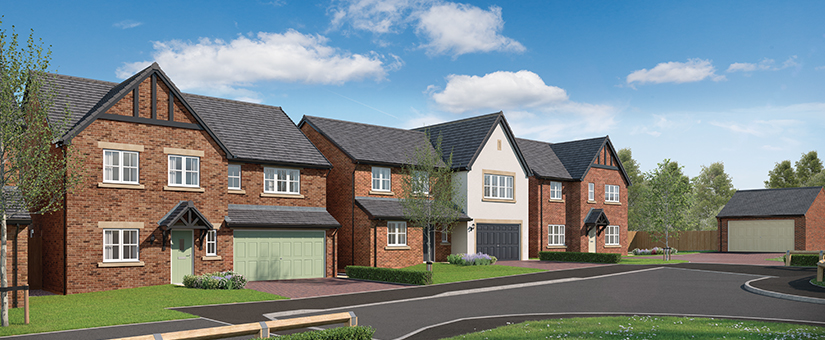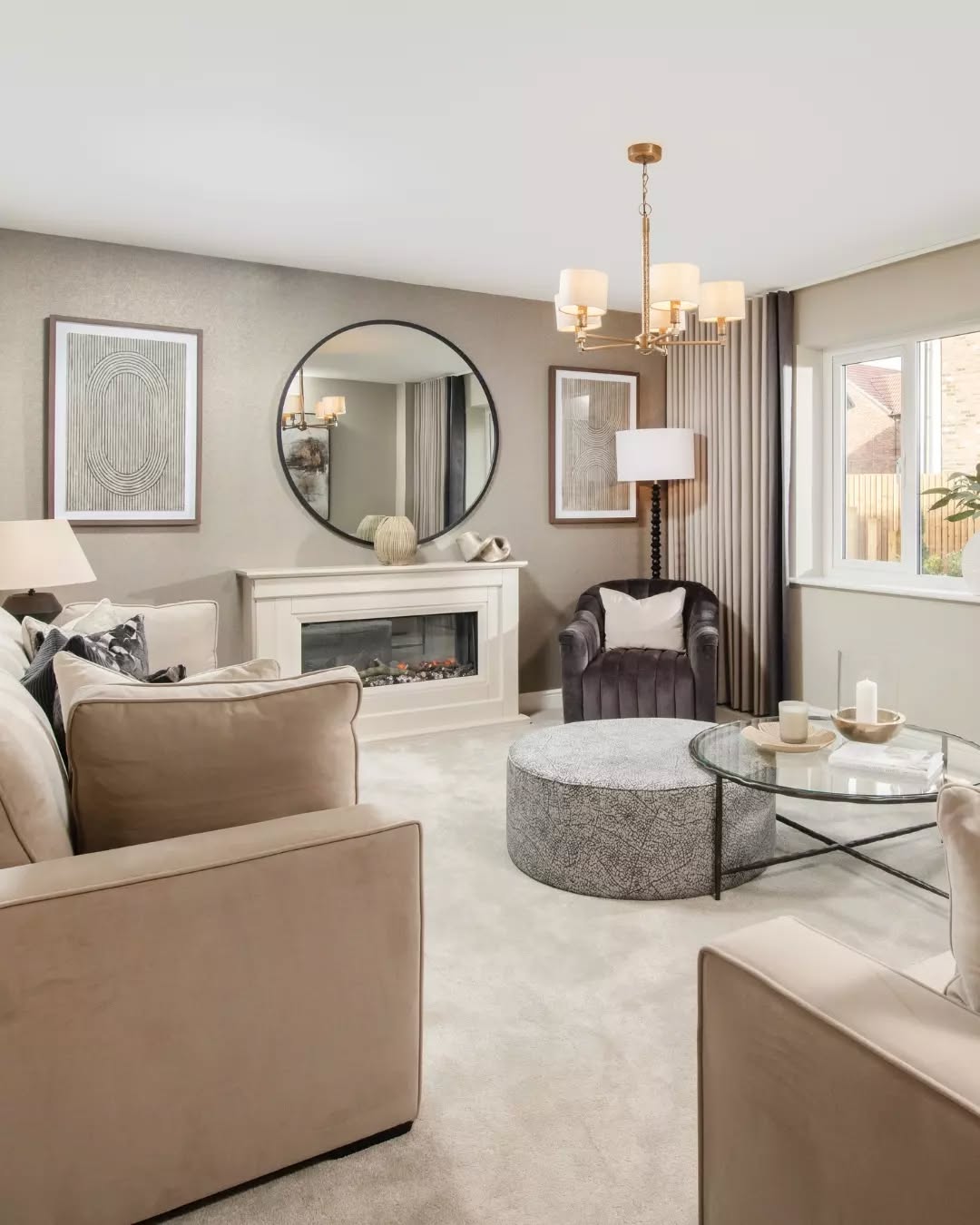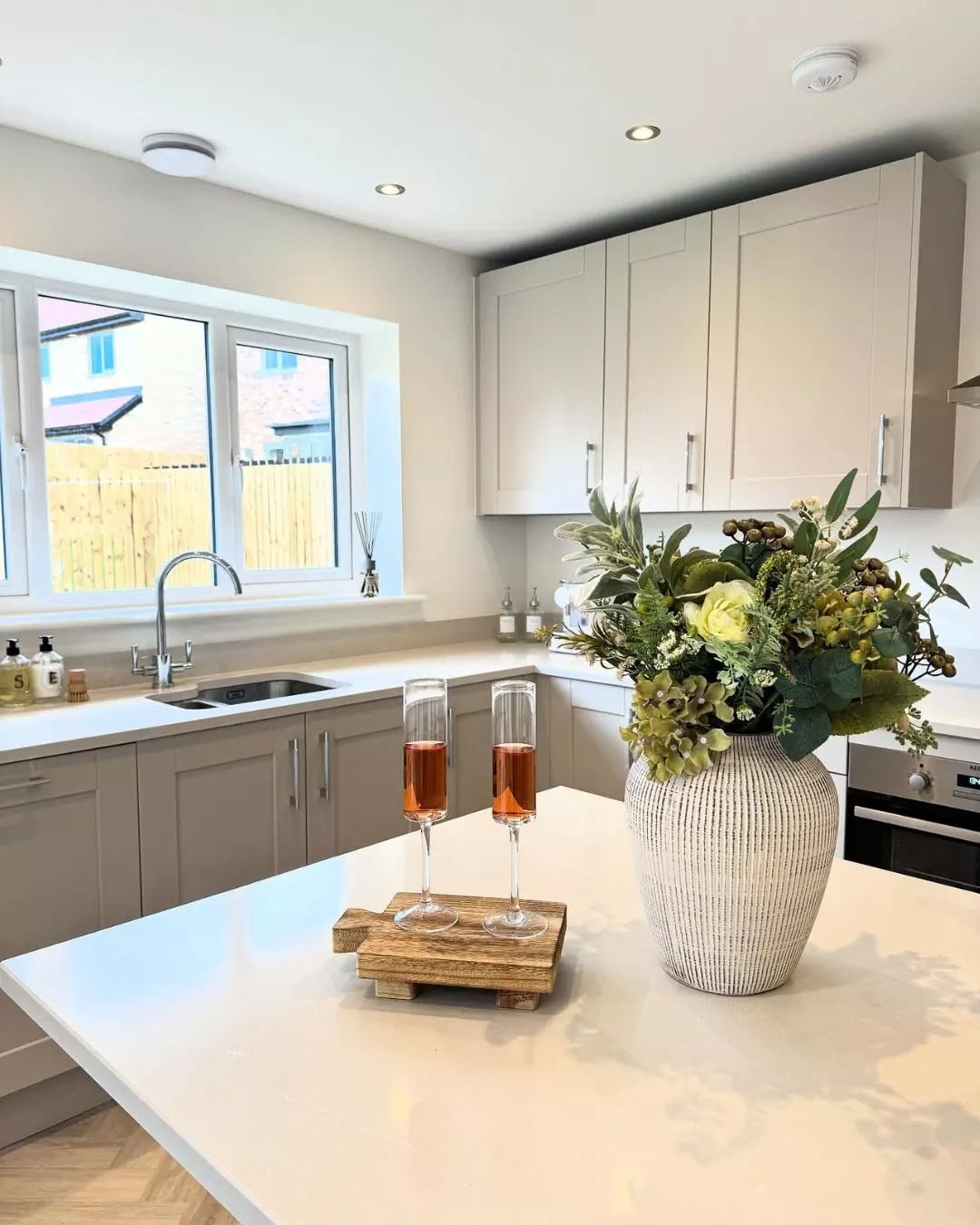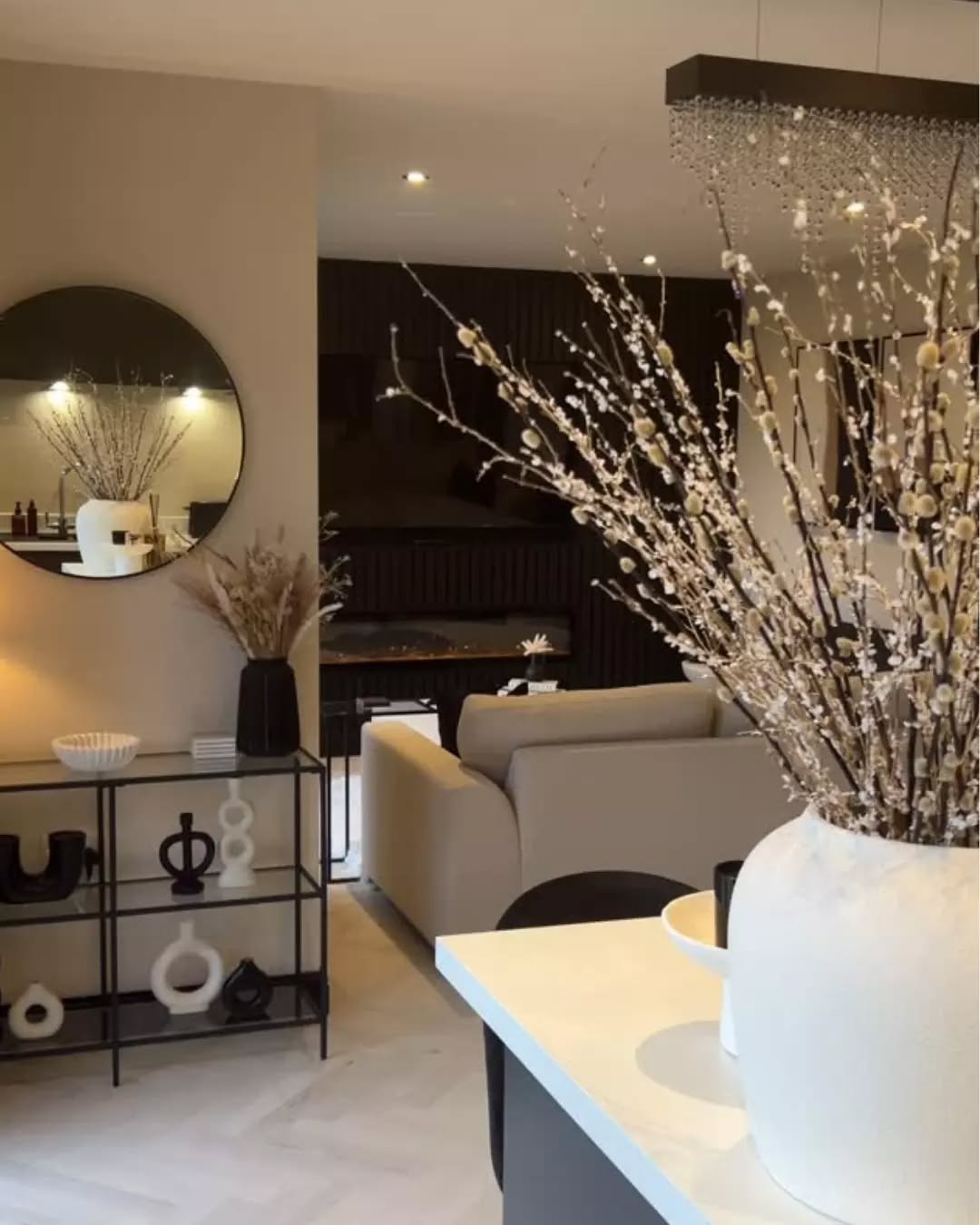One of the nicest things about buying a new home is that you get a blank canvas, ready to be customised perfectly to your own taste.
But working out what to do with your décor can seem like quite a responsibility!
Not to worry, though. We’ve taken some top tips from interior designers that can help you turn your gorgeous new house into a home that’s completely personal to you.
First, stand back and take a careful look at your space. Interior designers consider a room as a whole and take into account its size and shape, what it will be used for and what kind of lighting it’s going to need.
Then get planning. Colour is crucial, of course – cool hues such as blues and greys can make your room look bigger, while warm shades of red, pink and orange can make it more intimate or cosy.
Designers draw up a palette of related colours to use throughout a room (or even through the whole house), which gives a feeling of continuity and calm.
You could take inspiration for your palette from a favourite rug or piece of furniture – purples and lilacs, for instance, or greys and blues.
Don’t buy your paints purely from colour cards, though – before you invest, it’s worth bringing home sample pots to see how the colours look in your room, because light can make a big difference to the way shades look on the wall.
Many people love a plain colour scheme, and it does have the advantage of creating a sense of uncluttered calm. However, clever designers also add touches of pattern and texture that create extra interest in the room.
Be sparing with pattern, particularly if it’s a bold wallpaper. Many designers swear by the 60-30-10 rule; choose a palette that includes a strong colour or pattern for a feature wall – that’s the 10% – a paler version to emphasise character areas such as alcoves (30%) and a soothing neutral shade that ties them all together and makes up the final 60%.
Can you get away with mixing and matching patterns? Absolutely, as long as you stick to the same set of colours so nothing clashes. This works really well with accessories such as cushions and throws – all the little touches that really bring the room together.
You can accentuate your use of colour in a room by adding other toning accessories – for instance, coloured glass vases grouped together for an interesting display.
And don’t forget your flooring, which plays an important part in the colour scheme of your room. A neutral carpet or laminate throughout your house will provide an excellent backdrop whatever your choice of wall colour – you can add a rug in key places.
Greys have joined beiges among our favourite neutrals in recent years, and give you the option to refresh your colour scheme after a couple of years without needing to change the flooring.








